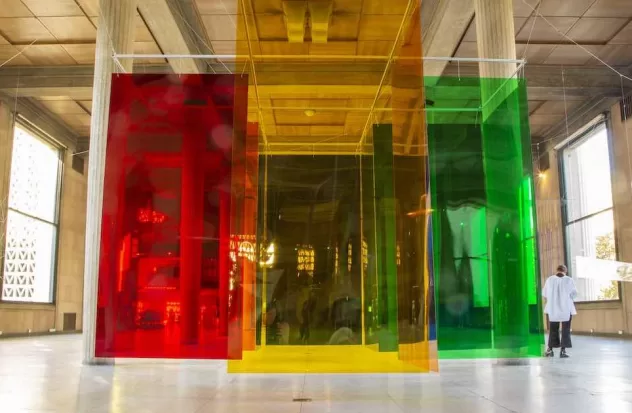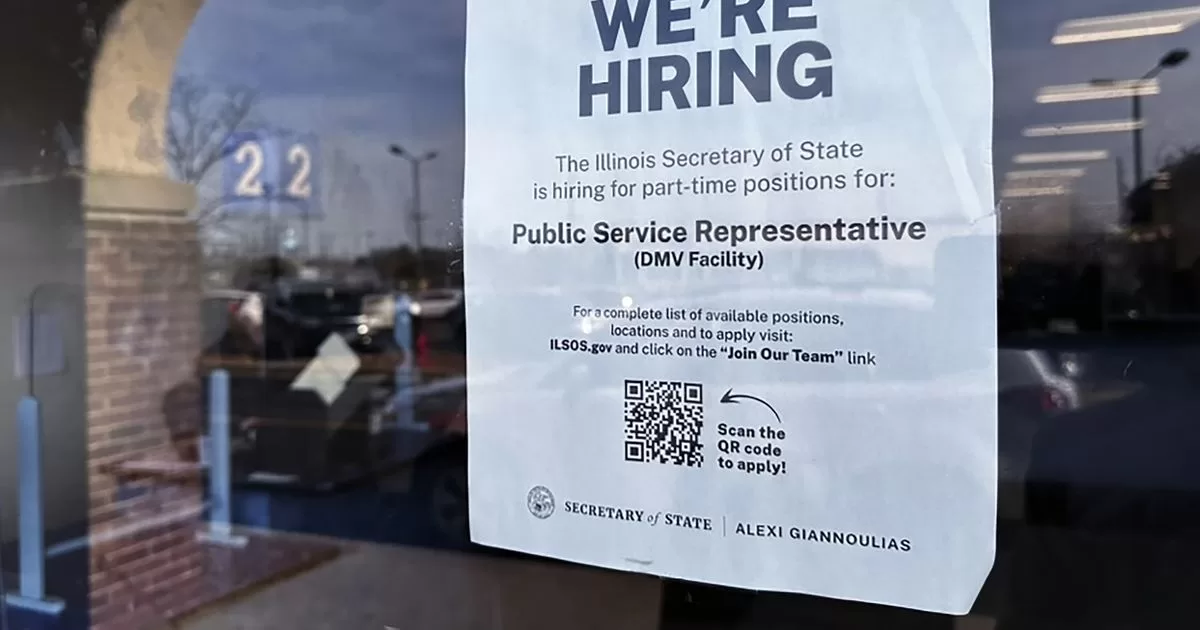The Center Pompidou Málaga exhibits an important selection of works by Carlos Cross-Tenbelonging to the collection of the Center Pompidou Paris, ranging from an initial project for an exterior mural, conceived in 1954, to one of his last works, the Labyrinthe de Transchromie B (1965-2018).
The exhibition Carlos Cruz-Diez. Color in motion It is open to the public until September 29. A significant tribute to Carlos Cruz-Diez on his centenary.
In the works of Carlos Cruz-Diez (1923-2019), color has an intrinsic value that allows it to affirm itself through its behaviors and ambivalences. As stated by the artist: “In all my works, I demonstrate that color, when interacting with the observer, becomes an autonomous and evolutionary reality, capable of invading space without anecdotes, devoid of symbols, without time or the help of form and yet, without “no support.” His works are not only observed with the eyes, but also with the body, since when we move we make new ranges of color emerge, giving space and time unprecedented functions. The concept or starting point of Cruz-Diez’s work is the substantive character of color, demonstrating in all his works that color, when interacting with the observer, becomes an autonomous and evolutionary reality, capable of invading space without anecdotes, devoid of symbols, in present tense
In 1955, during his first trip to Paris, Cruz-Diez visited the exhibition Le Mouvement, conceived by the notable gallery owner Denise René, together with Victor Vasarely and Pontus Hulten, by bringing together artists who wanted to shake off the traditional standards of art and delve into the scientific theories in vogue, adopt the technologies of the moment and experiment with new materials and innovative participatory proposals. This led to the genesis and ebullition of kinetic art in Europe, marking a key moment in the history of contemporary art by promoting a new dialectic between the viewer and the works. Cruz-Diez identifies with this innovative vision of art and in 1960, he decides to settle in Paris, eager to continue developing the chromatic and participatory research that he had been carrying out in Caracas since 1954 and show the world his findings on the chromatic phenomenon, therefore, He inscribes his plastic concern in a more comprehensive aesthetic approach that Kineticism offered him. About this he wrote: “For the first time in the history of art, real space and time are fundamental instruments of the creation of the work and require the activation of the viewer.”
Already established in Paris in 1960, his rigor and discipline led him to state: “I practice the discipline of the researcher and the experimenter, because the “supports” that I have managed to structure are a source of surprises and imponderables. I put into play light traps that capture, fix and show the behavior of color. In my works nothing is done at random, everything is planned, programmed and codified. Freedom and emotion only count when choosing and combining colors, a task to which I impose a single restriction: being effective in what I want to say,” to which he added: “I don’t get inspired, I reflect.” 1
Carlos Cruz-Diez. Color in motion provides the visitor with a magnificent opportunity to enjoy their findings related to the chromatic phenomenon. Among the representative works of his eight investigations, the Project for an exterior mural (1954), Movable rhythms for a wall (1955), several works corresponding to Addition Chromatique, Transchromie mecanique aleatoire, Chromointerference, Chromointerference mecanique, Physichromies, Labyrinthe de transchromie, Douche d’induction chromatique, Couleur additive, Induction chromatique, Chromosaturation et le Projet pour l’animation d’une interstation du metro parisien : lecture discontinue d’une ligne (1973 – 1984).
In one of the rooms, the visitor will be able to interact with the work Chromoscope, research started by Cruz-Diez in 1967. It is a portable viewer that allows the observer to transfigure the night landscape of large cities. Through the interference of intense colors with ambient light, streets, buildings, objects and people are dematerialized.
In the catalogue, Michel Gauthier, curator of the exhibition, states that Cruz-Diez entered modernity in 1954 with his participatory murals. “His first artistic investigations are characterized by the desire to inscribe art in the social space. In this sense, the project prefigures the Physichromies that, born five years later, would place color at the center of their research.” Physichromie or Transchromie are experienced through the viewer’s movement, which is why Gauthier compares them to scores, which allow each viewer to interpret them differently, transforming shapes and colors. It is impossible for two people to interpret a Physichromie exactly the same, the same happens with the route of the Labyrinthe de Transchromie. “This continuous and full presentness of a work of art whose existence presupposes being looked at and, in a certain sense, interpreted, even if only by the eye; and if there is a work that only exists through the gaze, or rather the successive glances, that are made of it, it is that of Cruz-Diez,” states the curator.
“Cruz-Diez’s work is born from a double concern: the chromatic epiphany and the social inscription of art. These two dimensions, the excitation of the optic nerve and political progressivism, are linked at an undoubtedly even deeper level. The fact that in the meeting area of two planes of different colors a virtual line of a third color appears is a retinal phenomenon independent of any knowledge and culture. The yellow that is generated in the eye of everyone, and in all climates, when white approaches blue and black, or the green perceived universally by the eye that has been bathed in red for some time: These chromophanies are where the politics of color according to Cruz-Diez resides, far from symbolism and codification,” says Gauthier.
The Center Pompidou Málaga, inaugurated in 2015, is a headquarters of the Georges Pompidou National Center for Art and Culture of France and is the first headquarters of the Center Pompidou Paris abroad in the Spanish city of Málaga. Its director José María Luna Aguilar and his team
museum together with the Atelier Cruz-Diez Paris, directed by Carlos Cruz-Diez Jr., made this notable exhibition possible.
Exhibition: Carlos Cruz-Diez. Color in motion Carlos Cruz-Diez. Color in Motion Carlos Cruz-Diez. The color in movement
Center Pompidou Málaga / March 21 – September 29, 2024.
Address: Pier One. Pje. of Dr. Carrillo Casaux, s/n, Distrito Centro, 29016 Málaga, Spain.
1 Carlos Cruz-Diez, Reflections on color, Juan March Foundation, Spain, 2009.


